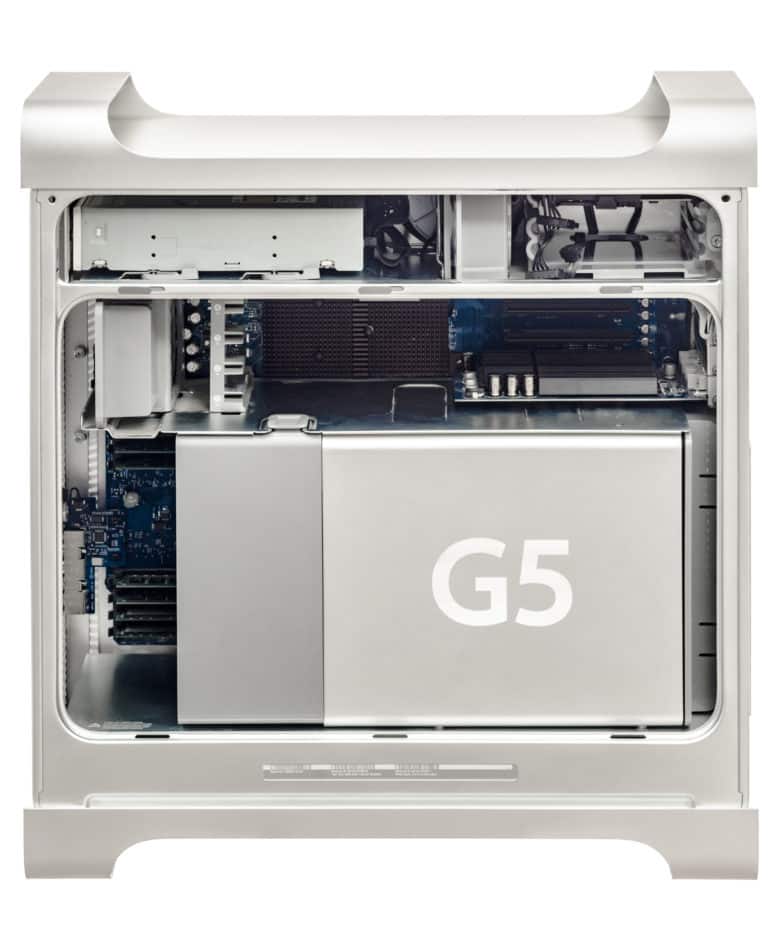 June 23, 2003: Apple launches its gorgeous Power Mac G5, a powerhouse desktop computer with a perforated aluminum chassis that earns it the affectionate nickname “the cheese grater.”
June 23, 2003: Apple launches its gorgeous Power Mac G5, a powerhouse desktop computer with a perforated aluminum chassis that earns it the affectionate nickname “the cheese grater.”
Starting at an affordable $1,999 (nearly $3,500 in today’s money, adjusted for inflation), the Power Mac G5 is the world’s first 64-bit personal computer. It’s also Apple’s fastest machine yet.
Power Mac G5 launch
Powered by a PowerPC 970 chip, the distinctive-looking computer delivered a seismic leap over its predecessors. It also outpaced competing Pentium 4 and Xeon machines in benchmarks as well as real-world applications.
However, it was about more than just speed. Its gorgeous aluminum chassis and modular internals laid the stylistic groundwork for the subsequent Mac Pro towers that would follow.
Specs of ‘the world’s fastest personal computer’
Inside the Power Mac G5’s anodized aluminum case, IBM’s PowerPC G5 CPU architecture provided a massive step up from the aging Power Mac G4, which had been Apple’s high-end Mac from 1999 until 2002.
Apple launched three different Power Mac G5 models running at 1.6 GHz, 1.8 GHz and 2 GHz. All used the same 64-bit PowerPC 970 (G5) processor, which offered higher clock speeds. It also brought vastly improved (and massively parallel) computing capabilities.
In advertisements, Apple touted the new computer’s speed when compared to PCs. The headline on one called it “the world’s fastest personal computer.”
“In side-by-side tests using industry-standard benchmarks, the [top end] dual 2.0-gigahertz Power Mac G5 is up to 41% faster than both the fastest Pentium 4 and dual-processor Xeon workstation,” Apple said. “And the results get even better when using real-world applications: the new Power Mac G5 runs Photoshop more than twice as fast as the fastest PCs.”
High-performance hardware
Apple CEO Steve Jobs promised that a 3 GHz model would be available “within 12 months,” but that never happened. In fact, a Mac with a processor capable of running at that speed did not arrive until three years later in 2006. That’s when Apple introduced the similar-looking Intel Xeon-based Mac Pro.
In terms of hardware, the Power Mac G5 packed an AGP 8X video card, FireWire 800, gigabit Ethernet, up to half a terabyte of internal Serial ATA storage and a SuperDrive for authoring DVDs. As far as professional-level computers went, very few could beat this beast of a machine in 2003. For trivia buffs, this was also Apple’s first computer to include USB 2.0 ports.
Power Mac G5: A stunning piece of Apple design

Photo: Bernie Kohl/Wikipedia CC
The industrial-inspired design of the Power Mac G5 made it distinctive in its day. In fact, it still looks stunning more than two decades later. (There’s a good reason why the “cheese grater” design returned with the 2019 Mac Pro.)
The G5’s gorgeous design wasn’t limited to the computer’s unique case, either. It was also the first Apple computer to have its interior — which most users would never even see — designed by Jony Ive and his team to be aesthetically pleasing.
The computer presented some problems, however. Some models suffered from noise and heating issues, although a subsequent liquid-cooled version attempted to correct these shortcomings.
One of the best Macs ever?
Still, the Power Mac G5 remains one of my favorite Macs of all time. It underlined the fact that Apple was doing much more than building fashionable mass-market devices like the iPod and consumer-friendly computers such as the colorful iMac G3 and iBook, models the company was most associated with at the time.
If you want to track down a Power Mac G5 now, it will likely set you back around $100 on eBay. Do you have fond memories of this machine? Leave your comments below.



One response to “Today in Apple history: Power Mac G5 is ‘world’s fastest personal computer’”
Steve Jobs on stage at Keynote wipes the floor with the competition. Nowadays there is nothing to see but products; with him there were products presented with charisma.